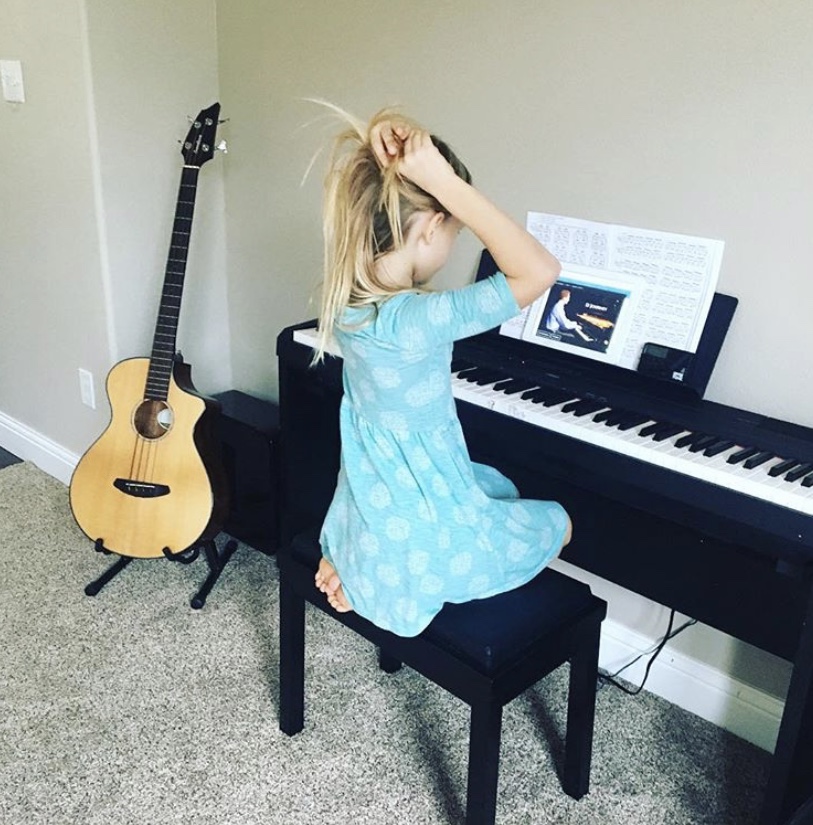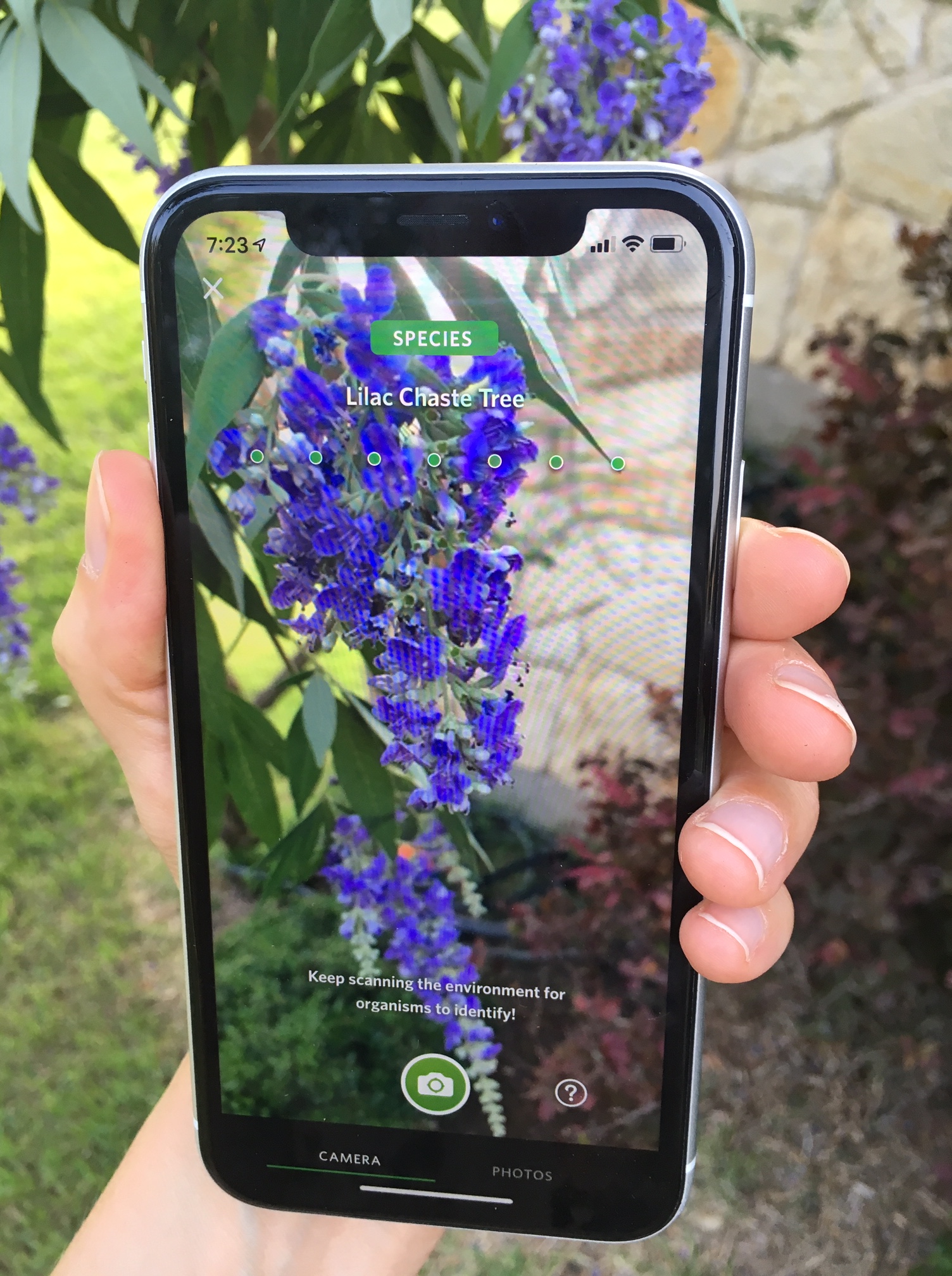Over the years our alternative education journey has included dance classes, theater classes, karate classes, ukulele lessons, museum memberships, theater tickets, state park passes, and trips across the country. I love introducing my kids to new ideas and new places. But as every parent knows, these experiences can start to add up to a small fortune, especially if you have more than one child. So, below I’m going to share some of the free and cheap resources our kids are loving right now.
All Trails app
We feel our best when we get outside into nature regularly. One of our favorite ways to explore new places is the All Trails app. Once you download the app and let it use your location, it will show you all the hiking trails nearby, including the distance, estimated time to finish, difficulty, user reviews, and photos. Right now we are hiking in the Texas summer with kids in tow, so knowing what we are getting into is key. We need shade, water to play in along the way, and a guarantee that we aren’t accidentally embarking on an 18-mile expedition. The app takes care of this for us.
As much as we love exploring new places, we also have some tried and true favorites that we regularly visit. During the pre-pandemic days, attending Free Forest School was part of our weekly routine. Free Forest School emphasizes the benefits of having kids experience the same location each week, season by season. This wisdom is encapsulated by a Native American proverb that states, “it is better to know one mountain, than to climb many.” Exploring one area of the natural world in detail allows kids to develop a special connection to the landscape and even a sense of responsibility for it. In our forest group, some kids recently became inspired to pick up trash that had ended up in “our” forest. Developing close familiarity with one area also allows kids to observe natural changes that occur with the seasons and weather, which is an important foundation for learning about many different life cycles.
For us, a mix of regular favorites and new adventures keeps us connected to nature without getting too bored by routine or too overwhelmed with planning.
Seek by iNaturalist
When we first started attending forest school, my kids were constantly asking me to identify various flowers, trees, insects, and other animal and plant life that we came across. I was clueless. I could identify about a handful of trees along with a few types of flowers that you would find in a grocery store floral section. That was about it.
Discovering the Seek app changed this and has been pulling me out of my ecological illiteracy. The app was created by the iNaturalist team, which is a joint initiative of the California Academy of Sciences and National Geographic. The iPhone app allows users to take photos of plants and animals and then immediately identifies the species. (I’ve learned it works a bit differently on Android phones.) On occasion, it’s unable to discern the species, especially if the photo is blurry or taken at an odd angle, but I find it generally works well.
The app has been a game changer for us. Being able to identify local plant and animal life is important for providing a sense of safety outdoors, and the knowledge gained also helps foster more respect for and connection with the natural world. I also love hearing my kids casually name drop plant and animal names that are all over our local area but I nevertheless only recently learned to identify, like greenthreads, pinkladies, lemon bee balm, salt marsh moths, black swallowtails, Texas spiny lizards, and green anoles.
The app also gives you the taxonomic classification of each species, so I’ve just started to introduce this idea to my kids. I remember learning about kingdom, phylum, class, order, family, genus, and species when I was in middle school, but the concept was completely abstract. Anyone else learn King Phillip Came Over For Good Spaghetti? That was more or less where my knowledge began and ended. Being able to apply this kind of knowledge to real-world plant identification is so much more meaningful and fun.
Art for Kids Hub
As much as we love a good outdoor adventure, there are also times we like to hang out at home. My 5 year old in particular is quick to recognize when she needs a “home day,” or break from running around to playdates and lessons and classes on our free days. My kids can spend hours playing with LEGOs and doing art projects, and my 7 year old is always quick to pick up a book, but my 5 year old (our youngest family member and only remaining non-reader) eventually starts to look around for some screen-based entertainment when we are home. Although we certainly don’t see screens as the enemy, we try to be intentional about our screen use.
Our favorite YouTube resource right now is Art Hub for Kids. The website and YouTube channel are run by a Utah-based family with four kids. The dad and kids appear in the videos and give drawing lessons using a step-by-step approach that is easy to follow for little and big kids (and adults). They emphasize that the most important thing is to have fun, which is great for kids with a perfectionist streak. My kids have created some pretty cool artwork they are proud of using these tutorials. Plus, it’s a fun thing they can do side by side.
Hoffman Academy Piano Lessons
Hoffman Academy was started by Joseph Hoffman, an active composer, conductor, and music teacher living in the Portland area. He has created an online music curriculum that builds a comprehensive set of musical skills including ear training, improvisation, sight reading, music theory, rhythm, and more.
The website includes over 200 free lessons that anyone can access. Each lesson includes a short video that is approximately ten minutes long, followed by a chance to practice what you learned. No prior piano knowledge or other musical background is required to begin. When we first created an account, my 7 year old flew through the first dozen lessons. She learned what each of the keys are, started playing simple songs like “Frog in the Middle,” and was soon drawing and cutting out quarter notes and quarter rests and arranging them on a piece of paper.
For those who want to get more serious about their musical education, Hoffman Academy offers optional materials that you can download for a fee, but we haven’t yet done so. The free lessons have been plenty for us so far.

Curiosity Stream
I have an on-again, off-again relationship with Netflix. Sometimes I break up with Netflix and stay away for months at a time, but eventually come running back when we have air travel scheduled or a new show comes out that I really want to see. For the kids, I love that Netflix has some amazing science and nature shows like the Magic School Bus and Blue Planet, and for the younger crowd, some great slow-moving, non-violent cartoons like Puffin Rock and Sarah and Duck (please come back). On the other hand, I would happily do without the more frenetic shows that rob us all of our peace of mind within about five minutes, or numerous shows highlighting interpersonal conflict and unhealthy body images.
Enter Curiosity Stream. For $2.99 per month, you get access to a smorgasbord of high-quality documentaries. My soon-to-be 8 year old has enjoyed the nature documentaries, but there are several other large categories, including science, technology, history, and society (my personal favorite) to choose from as well. Most of the options available don’t yet hold my 5 year old’s attention for long, but I do love that I can give my kids the option to watch anything this platform offers without having to worry about inappropriate content.

Hoopla
Hoopla is a library media streaming platform that allows library patrons at participating libraries to borrow audio books, ebooks, comics, movies, and music free of charge. We are able to borrow five titles each month. As someone who recently racked up more than $40 in library fines due to overdue books (oops), the best part for us is that the titles appear instantly on your device upon borrowing and disappear instantly from your device upon expiration. No remembering of due dates or sudden return trips to the library needed.
We listen to audiobooks frequently during drives, as a way to minimize boredom and bickering. My kids also love to listen to audiobooks at bedtime, especially on those nights when we parents are too exhausted to read for long (or at all). The app and website have content for both kids and adults across many different genres, so you can find reading and listening material for yourself too. After all, pursuing your own interests is a huge part of your children’s education. The model of a happy parent pursuing their own passions is one of the best gifts we can offer our kids.

What are your favorite resources for living and learning? I would love to hear from you in the comments below!







Hi Marilyn, Here below you can read Nina’s blog. AM
On Tue, Jul 2, 2019 at 11:50 PM Raising Wildflower Kids wrote:
> Nina posted: ” Over the years our alternative education journey has > included dance classes, theater classes, karate classes, ukulele lessons, > museum memberships, theater tickets, state park passes, and trips across > the country. I love introducing my kids to new ideas a” >
LikeLike
Thankyou for this lovely compilation. Will definitely check out Hoopla
LikeLike
Awesome! Hopefully your library has it. There is also Libby and Overdrive — both similar to Hoopla.
LikeLike